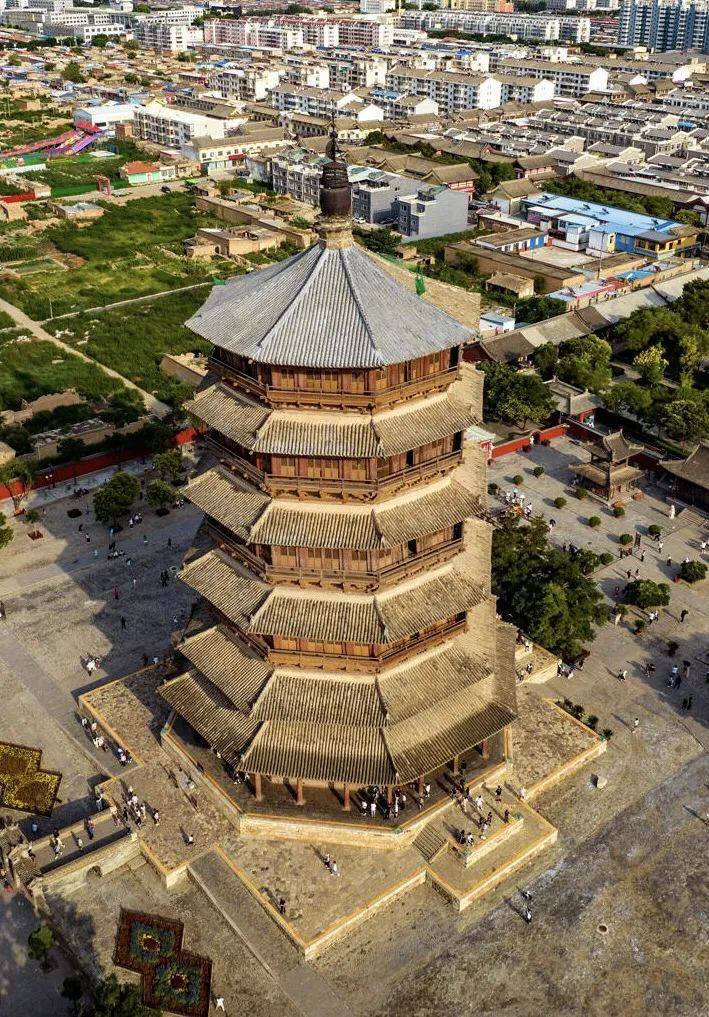Pavilion is a traditional Chinese architecture, originated in the Zhou Dynasty. NAME TRANSLATION records that "Pavilion, sounds the same as ‘being stopped’ in Chinese, is where people can get together and take a rest". From that we can see that since ancient times pavilion is a place for pedestrians to rest.
亭是一种中国传统建筑中国传统建筑,源于周代。《释名》中记载“亭者,停也。人所停集也。”可见亭子自古就是供行人休息的地方。
Photo by Aolin Chen
In fact, however, at the very beginning, pavilion is not a building for people to enjoy leisure time. During the Zhou dynasty, pavilion was the stronghold fortified on the frontier. Until the Wei, Jin, Northern and Southern Dynasties, pavilion started to appear in the garden as ornamental architecture.
但其实最初的亭并不是一种供人休闲与观赏的建筑。在周代时,亭是设在边疆要塞的堡垒。直到魏晋南北朝时,亭才逐渐出现在园林之中,成为观赏性建筑。
Photo from Web

There are many types of pavilion. Sorting by shape, the most common one is square pavilion. Besides, there are circle, pentagon, hexagon, octagon and so on. Sorting by materials, the wood pavilion is the most common one while stone pavilion is also as well. Thatch pavilion usually supported by log, with thatch or bark covered, austere and natural, which makes it popular among refined scholars. In addition, there are bamboo pavilion, brick pavilion, etc.
亭子分很多种类。从形状来看,最常见的是方亭。此外还有圆亭、五角、六角、八角等等。从建筑材料来看,木亭居多,石亭也比较普遍。而曾经茅亭则是多以原木为梁柱,盖以茅草或树皮,朴实自然,颇受雅士的喜爱。除此以外还有竹亭、砖亭等等。
The four most famous pavilions in China are the Zuiweng Pavilion in Chuzhou, the Taoran Pavilion in Beijing, the Aiwan Pavilion in Changsha, and the Huxin Pavilion in Hangzhou. Among them, Zuiweng Pavilion, located on the Langya Hill of Chuzhou City and was built in 1047 AD, marks the top of the four. It is famous for the essay written by Ouyang Xiu, who was one of the Eight Great Men of Letters of the Tang and Song Dynasties.
中国有四大名亭,它们分别是滁州的醉翁亭,北京的陶然亭,长沙的爱晚亭、杭州的湖心亭。其中四大名亭之首醉翁亭位于滁州市琅琊山旁,始建于北宋庆历七年(1047年),由唐宋八大家之一欧阳修命名并撰《醉翁亭记》一文而闻名遐迩。
Zuiweng Pavilion, Photo from Web
Because of being favored by the literati, these amazing pavilions have gradually been given profound cultural meanings, attracting many visitors and becoming the must-see places for the literati of all ages.
因为深受文人墨客青睐,这些亭子在造型优美的同时逐渐被赋予中国传统建筑了深厚的文化意义,吸引了许多访客,也让它们成为了历代文人的必游之地。
Photo by Xiaojun Shen
Today, pavilions have been built all over China. It is no longer just a resting place or a beautiful building for viewing. The historic significance and cultural connotation make pavilion a symbol of Chinese culture.
如今,亭遍布了中国的大江南北。它不再仅仅只是一个歇脚的处所,也不仅仅是一个可供观赏的美丽建筑。亭所具有的历史意义和文化内涵使它成为了中国文化的符号。
记者中国传统建筑:许源哲 吴云 张天放
美编:孙浩

责编:郭可树 于欣弘









